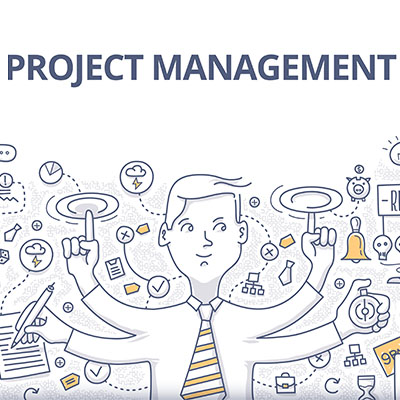Businesses don’t always glide along. All business owners know that there can be all sorts of bumps in the road. Worse, sometimes solving one problem creates another one. This is often true of the technology we depend on to keep our businesses moving forward smoothly. Though IT solutions can resolve all sorts of the practical issues that business owners need to manage, choosing, implementing and maintaining IT solutions can also be plagued with glitches. Let’s look at some reasons why an IT project could cause you headaches.
Alignment with Business Needs
Your technology is there to make operations easier. Unfortunately, things will sometimes be out of sync, and a new tech solution fails because of friction in the system. In other words, planning and practice need to be aligned for IT projects to function optimally.
One basic measure you can take is to set some basic parameters around the implementation of a new IT solution. It should begin on a given date, with all stakeholders informed and on board. Users need to receive regular updates about how things are progressing and where there may be delays or disruptions. Downtime is sometimes hard to avoid when implementing IT, so everyone who may be affected by the change needs to be in the loop.
Cost Control
Even the best planning initiatives can run into problems, because not every issue can be anticipated. On top of what may already be a considerable expense, you may find yourself having to spend more to fine-tune the system. Major IT projects typically involve considerable investment, and a whole lot of commitment. Make sure that your budget isn’t too rigid, and that you have the resources to deal with any possible glitches – because they can and do happen.
Be pragmatic and committed. Even if you do have to spend more to tweak and customize your IT project, getting it fully functioning as quickly as possible is essential. The sooner you can complete the project, the quicker the returns and the sooner you’ll reap the benefits of your capital outlay.
Communication Problems and Tools to Avoid Them
We’ve already mentioned that everyone affected by upgrading your systems needs to be informed of what’s going on and when, to avoid making the effects of any downtime even more disruptive. Good communication is the key principle, but how can this be achieved? A good project manager is at the heart of effective communications, and it’s their responsibility to make sure that people have the information they need at all times.
These days there are a number of tools to enhance communications. The project manager will need to liaise with everyone involved, from business owners and executives, to administrators, production workers and more. These tools are easy to use and will allow speedy communications, chats with teams and video meetings. Providing the project manager with these tools to aid good communications will make his or her job that much easier.
Ineffective Project Management
Perhaps the most important point to make is that good project management leads to successful IT implementation, and the reverse is also true. A skilled project manager will be working on a whole lot of fronts, catering for the needs of staff and managing the expectations of all involved, from top to bottom. He or she will be proactive, anticipating problems and understanding the needs of the company and all those working within it. Important skills include delegating and prioritizing, as well as communications.
At Quikteks, we are experienced in implementing IT solutions and are here to assist you with your IT needs. For information on planning and executing new IT projects, as well as anything related to IT support, call us today at (973) 882-4644.

